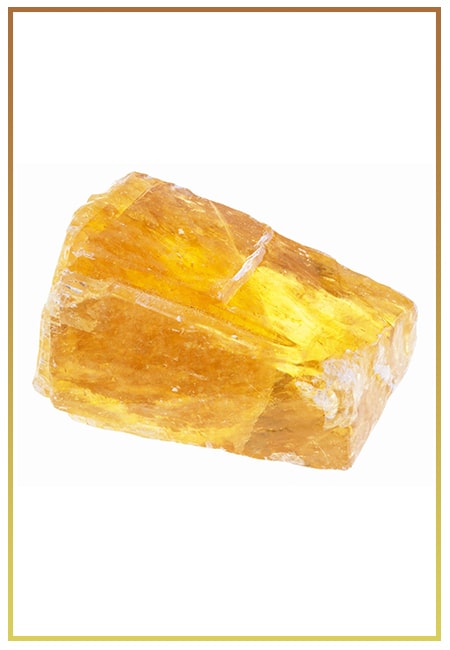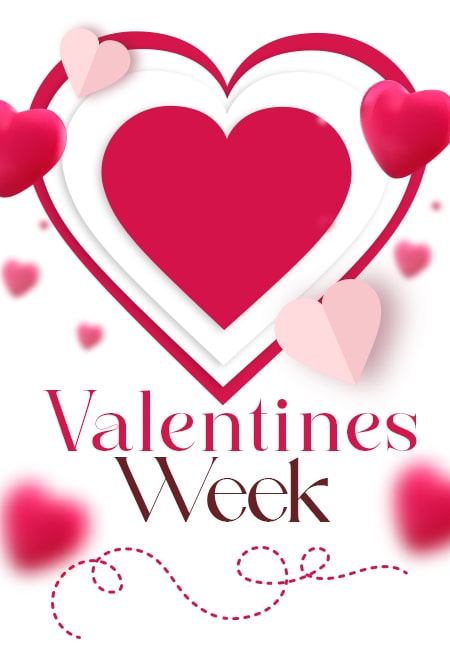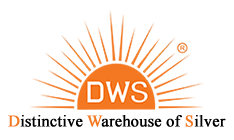- Written By Team DWS
- Festivals
- August 24, 2024
Unity in Diversity: Why European Day of Languages Matters
In an increasingly globalized world, the rich tapestry of languages spoken across Europe serves as a testament to the continent's history, culture, and identity. The European Day of Languages, celebrated annually on September 26, stands as a reminder of the importance of multilingualism, cultural diversity, and understanding. This day not only promotes language learning but also emphasizes the significance of linguistic diversity as a unifying force among distinct cultures. In this blog post, we delve into the importance of this day, the challenges and opportunities presented by multilingualism, and the collective effort required to foster unity in diversity across Europe.
The Origins of the European Day of Languages
The European Day of Languages was established in 2001, spearheaded by the Council of Europe and the European Union, to promote language learning and cultural diversity. This initiative emerged as a response to the increasing need for individuals to communicate effectively in a world characterized by migration, technological advancements, and international partnerships. The day serves as an opportunity to recognize the value of all 225 indigenous languages across Europe, from widely spoken languages like English, French, and German, to regional languages and dialects that are at risk of extinction.
-dws638616946037264158.jpg)
Multilingualism: A European Asset
Multilingualism is one of Europe’s greatest assets. The continent is home to over 700 languages, each contributing to the cultural richness of its nations. According to the European Commission, over half of Europeans claim they can hold a conversation in a second language, and more than a quarter can speak at least three languages. This proficiency empowers citizens to engage with one another beyond borders, facilitates trade and business relations, enhances cognitive abilities, and promotes critical thinking.
From an economic perspective, multilingualism is vital for businesses. In an increasingly interconnected global marketplace, the ability to communicate in various languages is crucial for companies looking to expand their reach. Language skills foster trust and relationships between partners, clients, and local communities, giving businesses a competitive edge. Moreover, employees who are multilingual contribute to a more inclusive and innovative workplace, thereby enhancing productivity.
Linguistic Diversity and Cultural Identity
Language is not merely a tool for communication; it is a carrier of cultural identity and heritage. Each language encompasses unique expressions, idioms, and ways of thinking. For instance, certain concepts or feelings may be articulated in one language but found lacking in another—capturing nuances of cultural experiences that define individual and collective identities.
Preserving and promoting linguistic diversity aligns with the principles of cultural respect and understanding. The European Day of Languages highlights the need for cultures to learn from one another, fostering respect and empathy among communities. By celebrating different languages and cultures, Europe can cultivate a sense of belonging and unity among its diverse populations, ultimately strengthening societal cohesion.
Challenges to Language Preservation
Despite its numerous benefits, linguistic diversity faces significant challenges. Globalization, urbanization, and the dominance of a handful of languages can lead to the marginalization and extinction of lesser-spoken languages. According to UNESCO, nearly half of the world’s languages are at risk of disappearing. In Europe, languages such as Welsh, Irish, and Scots Gaelic are under pressure, while many immigrant languages struggle for recognition in predominantly monolingual communities.
The decline of language proficiency also results from an educational system that often prioritizes dominant languages over minority ones. Efforts to promote language preservation must therefore occur within the education system, encouraging students to learn not only widely-used languages but also their native tongues and those of their communities. The European Day of Languages advocates for educational policies that prioritize multilingual education, fostering both personal and collective linguistic growth.
Strategies to Promote Multilingualism
To fully reap the benefits of multilingualism, concerted efforts from governments, educational institutions, and community organizations are needed. Here are several key strategies:
- Curriculum Development: Educational systems should integrate multilingual education, allowing students to learn multiple languages from an early age. Bilingual and immersion programs can effectively teach children their native language alongside a second language.
- Community Engagement: Local communities play a crucial role in promoting linguistic diversity. Cultural events, language clubs, and workshops can help immerse individuals in different languages and cultures, creating opportunities for interaction.
- Language Technology: Innovations in technology, such as language-learning apps and online resources, can facilitate language acquisition. These platforms can make learning accessible, interactive, and tailored to individual needs.
- Recognition of Minority Languages: Governments must take a proactive stance in protecting and promoting minority languages. Legal recognition and integration into public services, such as education and media, can elevate their status and encourage speakers to maintain their linguistic heritage.
- Cultural Exchange Initiatives: Programs that promote cultural exchange among different language groups can foster understanding and appreciation of diversity. These initiatives may include student exchange programs, internships, and partnerships between institutions in different countries.
Celebrating the European Day of Languages
Here are the key highlights of commemorating the European Day of Languages, celebrated annually on September 26:
- Promotion of Multilingualism: The day aims to encourage the learning of multiple languages and highlight the benefits of being multilingual, such as cognitive advantages and enhanced cultural understanding.
- Cultural Diversity: European languages represent a rich tapestry of cultures, traditions, and histories. Celebrating this day helps to appreciate and respect the diversity that languages bring to Europe and beyond.
- Language Learning Initiatives: Various programs and events are organized across schools, universities, and community centers to promote language learning and engage people of all ages in fun, interactive activities.
- Awareness of Language Rights: The day emphasizes the importance of language rights and the need to support minority and regional languages, ensuring that all languages have a voice and place in European society.
- Collaborative Events: Schools, cultural organizations, and institutions collaborate to host events such as language fairs, workshops, and competitions, fostering a spirit of cooperation and cross-cultural exchange.
- Use of Digital Media: In the contemporary world, digital platforms are utilized to share resources and showcase the importance of languages, making language learning more accessible to diverse audiences.
- Linguistic Heritage and Preservation: The celebration serves as a reminder to cherish and preserve Europe’s linguistic heritage, encouraging efforts to revitalize endangered languages and promote their use in daily life.
By celebrating the European Day of Languages, communities can foster a greater appreciation for linguistic diversity and encourage lifelong language learning.
-dws638616946300249290.jpg)
European Day of Languages FAQs: Your Guide to Celebrating Linguistic Diversity!
Below are some frequently asked questions (FAQs) about the European Day of Languages:
1. What is the European Day of Languages?
The European Day of Languages is celebrated on September 26th each year. It aims to promote linguistic diversity and encourage language learning throughout Europe. The day was established by the Council of Europe in 2001.
2. Why is the European Day of Languages important?
The day highlights the importance of language learning for personal development, social cohesion, and cultural understanding. It encourages individuals to appreciate linguistic diversity and enhances intercultural communication.
3. Who organizes the European Day of Languages?
The European Day of Languages is organized by the Council of Europe in collaboration with various educational institutions, cultural organizations, and language advocacy groups across Europe.
4. How can I participate in the European Day of Languages?
Individuals can participate by organizing or attending events such as language classes, cultural workshops, language exchanges, and online campaigns. Schools and communities often host activities to promote the day.
5. What types of activities are typically held on this day?
Activities may include language-themed contests, workshops, quizzes, storytelling sessions, film screenings, and performances that celebrate different languages and cultures. Schools and universities often engage students in special programs.
6. Is there a specific theme for each year?
While there is no fixed annual theme, the focus of the celebrations may vary based on current issues related to language learning, cultural exchange, and multilingualism. It's best to check official announcements for any specific themes.
7. How does the European Day of Languages support multilingualism?
The day promotes multilingualism as a key aspect of cultural heritage and European identity. It encourages individuals to learn and use multiple languages, supporting the idea that linguistic skills enhance communication and understanding across cultures.
8. What resources are available for educators?
Educators can access a range of teaching materials, resources, and guidelines available on the official European Day of Languages website and related platforms. These materials include lesson plans, activity ideas, and promotional tools.
9. Can organizations get involved?
Yes! Organizations, schools, and institutions are encouraged to organize events and activities for the European Day of Languages. They can also collaborate with others in their community to maximize impact.
10. Where can I find more information about the European Day of Languages?
More information can be found on the official website of the European Day of Languages, maintained by the Council of Europe, as well as through local cultural institutions and language organizations.
---
Feel free to tailor this FAQ to your specific needs or add any additional questions you think would be helpful!
Popular on Blogs

Black Tourmaline: Meaning, Healing Properties, Fascinating Facts, Powerful Attributes, Versatile Uses, and Beyond
September 05, 2023 / BY Team DWS
Black Tourmaline, also known as Schorl, is a highly revered crystal with incredible metaphysical properties. It derives its name from the Dutch word "turamali," meaning "stone with ..

Carnelian Stone: Meaning, Healing Properties, Power, Facts, Color, Uses and More
December 26, 2023 / BY Team DWS
Carnelian is a vibrant and captivating gemstone that holds a plethora of meanings, healing properties, and powers. Its warm and fiery energy makes it a popular choice among crystal ..

Citrine: Exploring its Meaning, Healing Properties, Fascinating Facts, Powers, Versatile Uses, and Much More
November 18, 2023 / BY Team DWS
Citrine, with its warm golden hues, has captured the attention and imagination of people for centuries. This beautiful gemstone, commonly associated with wealth and prosperity, hol ..

Black Onyx: Unveiling the Meaning, Healing Properties, Fascinating Facts, Powerful Attributes, Versatile Uses, and Beyond
July 25, 2023 / BY Team DWS
Black Onyx, a striking gemstone admired for its deep black hue and elegant appearance, has captivated people for centuries. In this comprehensive guide, we will delve into the mean ..

Unveiling the Mysteries of Turquoise Stone: Exploring its Meaning, Healing Properties, Power, Facts, Color, Uses, and More
December 05, 2023 / BY Team DWS
Turquoise, with its captivating blue-green hue, has been adorning jewelry and artifacts for centuries. This striking stone has a rich history, rich symbolism, and a plethora of int ..

The History Behind The Popularity of Red Agate
December 23, 2022 / BY Team DWS
An Agate is a type of magma rock that takes many years till it is washed out naturally into the water. And that is the reason this stone has elements of water. This beautiful stone ..

Plan a Perfect Valentine's Week with Our Valentine Week List 2025
January 22, 2024 / BY Team DWS
Valentine's Day is undoubtedly the most romantic day of the year, but we believe that one day is just not enough to express your love and make your partner feel special. That's why ..

Bloodstone: Unveiling the Meaning, Healing Properties, Facts, Powers, Uses, and More
August 21, 2023 / BY Team DWS
Bloodstone, with its captivating deep green color with specks of red, is a mesmerizing gemstone that has fascinated civilizations for centuries. It possesses unique healing propert ..


